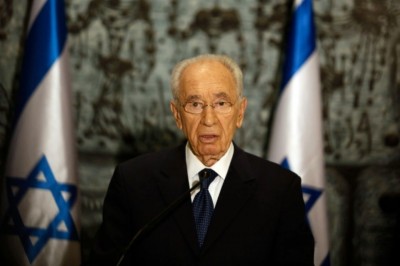Neither War Nor Peace: Shimon Peres, Israel and History

“[Shimon Peres] thought about history where Netanyahu thinks about the next election.” — Itamar Rabinovic, New York Times, Sep 30, 2016
“We learned from the British,” explained the late Shimon Peres in The Guardian in 2011, “what democracy means, and how it behaves in times of danger, war and terror. We thank Britain for introducing freedom and respect of human rights both in normal and demanding circumstances.”[1]
This student of history was the pitch perfect representation of the Israeli narrative, one born in brutality, maturing in it, and then, in time, considering the option of peace through necessity. The realisation that the Jewish state would have to make concessions from its imperial loft was not a point he wished to make. Circumstances dictated it.
All of this was part of the role of making history, to count in its annals, to matter in the books. Each Israeli leader has been obsessed by that theme: to achieve something supposedly unprecedented, the next stage, a form of outdoing the impossible, namely, Ben-Gurion’s own effort in establishing the state of Israel.
Prior to Israel’s birth as a nation state, Peres was confronted by the dilemma of what entity would become. A vision of it came, fittingly enough, from Ben-Gurion, who in 1946 was chairman of the Jewish Agency. Leon Trotsky, explained Ben-Gurion to Peres, was no statesman, “Because of his concept of no-peace-no-war.”
Ben-Gurion went on to elaborate. Such a concept was a “Jewish invention,” and not something Lenin succumbed to when he agreed with the brutally stripping 1917 Brest-Litovsk treaty with Imperial Germany. Lenin, despite being “Trotsky’s inferior in terms of intellect” was the supreme statesman, deciding on peace and paying “the heavy price that peace required.”[2]
For decades, Peres was the man of war. He joined the predecessor of the Israeli Defence Forces in 1947, the Haganah, and in 1948, became head of naval services. With Israel still in swaddling clothes, Peres was dispatched to Washington to procure arms, a line of supply which has never dwindled. He kept company with Ben-Gurion on his 1956 trip to Sevres, France, where Israel plotted with French and British ministers to make war on Gamal Abdel Nasser’s Egypt after the Suez Canal had been seized.
Political figures in the Middle East tend to be highly evolved chameleons, adeptly changing colours in far more skilled fashion than clumsy tigers hiding spots they can never remove. This adjustment saw Peres morph from dedicated war maker and military builder to agent of reconciliation, though few were fooled by this change of heart. Those with sufficiently long memories recall the firm backer of Israeli settlements in the West Bank in the 1970s.
Politics offers a flexible medium to play in, and in the theatre of the Middle East, grand manoeuvrability is possible. On this stage, Peres ducked and weaved, living up to the assessment made by another man of transformed credo, Yitzhak Rabin, who claimed Peres was “a tireless schemer” and “indefatigable underminer”.
With the victory of Labour in June 1992, the first in fifteen years, Israel was still functioning with the perspective of war as the essential, if not only weapon, for its survival. Rabin preferred a different tack: To use peace as a weapon, a task which he sought assistance from his long term foe.
It was projected in two phases, one featuring an interim arrangement granting the Palestinians control over most of Gaza and local governance in the West Bank. These would be affirmed in the second phase to secure a permanent arrangement after the 1996 elections. Jordan and Syria would also feature as regional partners.
On the surface, it seemed that progress was being made. But the agreement with Yasser Arafat and the subsequent creation of the Palestinian Authority enabled a different form of control to be asserted. While the PA, lacking accountability and transparency, bullied and ruled, Israel was still able to exert control over the subjects it was meant to be gradually releasing from historical captivity.
With the assassination of Rabin in November 1995, Peres became prime minister, gifted a legacy he squandered at the election of May 29, 1996. Where Rabin had been certain, Peres dithered, leaving the ground fresh for a seizure by Benjamin Netanyahu. The Oslo process withered, as did the image of Peres the peacemaker, with a dubious campaign in Lebanon, and the killing of a Hamas operative in January 1996 that sparked retaliatory Palestinian suicide attacks.
To the last, Peres would speak of the need for yielding. “Israel,” he claimed at Rabin Square in Tel Aviv two years ago, “will be giving up its future if it sees the status quo as its desire.”[3] That status quo has been all the rage under Prime Minister Benjamin Netanyahu.
Peres, at 93, was one of the last significant figures to the tortured history of a country deemed both remarkable and tyrannous in equal measure, a stunning yet brutal social experiment in the Middle East. As with his colleagues, and Ben-Gurion, Peres helped build a country that has seen a state neither of peace nor war, but a kingdom precariously perched on the precipice.
Dr. Binoy Kampmark was a Commonwealth Scholar at Selwyn College, Cambridge. He lectures at RMIT University, Melbourne. Email: [email protected]
Notes
[1] https://www.theguardian.com/

